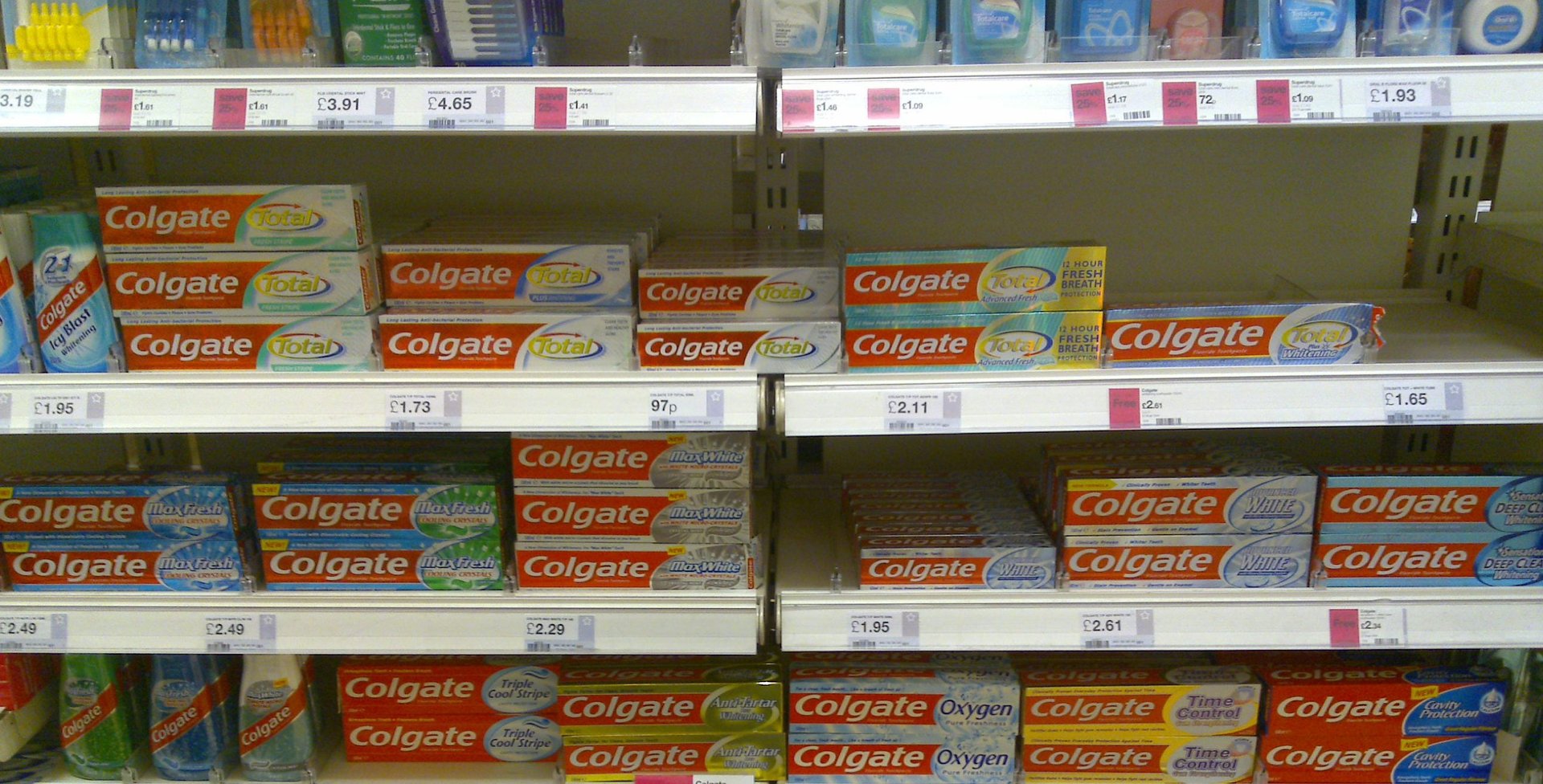A harmful antibacterial the US has banned in hand soap is still allowed in toothpaste
Nearly a year has passed since the US Food and Drug Administration banned Triclosan from hand soaps and body wash in the country. But the antimicrobial and its chemical relatives are still on the ingredients list for loads of other products people in the US and internationally put on their skin and in their mouths—more than 2,000 of them, according to a statement published Tuesday (June 20) and signed by 200 doctors and scientists from all over the world.


Nearly a year has passed since the US Food and Drug Administration banned Triclosan from hand soaps and body wash in the country. But the antimicrobial and its chemical relatives are still on the ingredients list for loads of other products people in the US and internationally put on their skin and in their mouths—more than 2,000 of them, according to a statement published Tuesday (June 20) and signed by 200 doctors and scientists from all over the world.
Citing well over 100 peer-reviewed papers, they concluded that triclosan does more harm than good, and should not be in products for everyday use.
The additive was shown to be an endocrine disruptor in several animal studies—meaning it could alter hormone systems, leading to reproductive and developmental problems. In one study, male rats given triclosan had reduced testosterone and sperm production, for example. In another, female rats exposed to the chemical had miscarriages. Research has also shown that due to the indiscriminate bacteria-killing feature of triclosan and its related compounds, they have the potential to contribute to antibiotic resistance and could alter the gut microbiome.
Human studies are lacking, but the scientists who issued the statement say the animal research is enough to prompt investigation into possible human effects and to call for a cautious approach to its use in the meantime. And the fact that it shows up in human urine and blood plasma at high rates ought to make the red flags from animal studies especially pressing, they argue. One study, in China, found triclosan in the urine of 99% of people tested. Another, in the US, found it in 75% of urine samples. Studies have determined triclosan can cross the placenta, and it showed up in cord blood samples and amniotic fluid of pregnant women tested in the US and India. It shows up in women’s breast milk, too.
But unlike some pernicious compounds, once a person stops being exposed to triclosan, it will eventually disappear from their system.
“We’re not saying they should be banned, but they shouldn’t be used without good reason. But to the best of our knowledge, there is no health benefit,” says chemist Arlene Blum, who founded the Green Policy Institute, an advocacy group that spearheaded the statement on triclosan.
In short: There’s no reason to have antimicrobials in your toothpaste unless you have gum disease, Blum says, and in mostly every other case, regular soap and water does just as good a job at removing harmful microbes—without all the potential health hazards posed by triclosan.
“Quite frankly, it creates more problems than it really solves,” says Larry Robertson, director of the human toxicology program at the University of Iowa, says. He is among the scientists who signed the document at a conference of toxicologists in Florence, Italy, last year.
Take Colgate Total toothpaste, for example. The label boasts triclosan as an active ingredient. But, Robertson says, “You don’t want your teeth disinfected. The whole idea of brushing your teeth is to remove film and residue—we don’t need to disinfect our mouths. There is a spectrum of beneficial organisms that living in your mouth. You don’t want to get rid of them.”
When you wash your face with that triclosan-laced acne face wash, for example, the water that goes down your sink heads to a wastewater treatment plant, where chlorine is added. Triclosan can react with chlorine to form chlorinated byproducts such as chloroform, which the World Health Organization categorizes as a “possible human carcinogen.”
More than a decade ago, the US Centers for Disease Control wrote that hospital personnel shouldn’t be fooled by products that tout their triclosan content, despite its enticing labeling as an antimicrobial. “No evidence is available to suggest that use of these products will make consumers and patients healthier or prevent disease,” the CDC wrote in a 2003 report. “No data support the use of these items as part of a sound infection-control strategy.” In Europe, triclosan has been banned in ingestibles for years, and in 2015, the EU Standing Committee on Biocidal Products rejected an application for the approval of the use of the chemical in hygiene products. Consumer goods that use triclosan have to be phased out in the EU this year (paywall).
Americans shouldn’t wait for the FDA to tell them to stop using triclosan. “The FDA was trying to regulate triclosan since the [19]70s—and it took them 42 years to do hand soap,” Blum says.
Instead, she hopes public awareness will spur manufacturers to drop the ingredient voluntarily. Already, after showing Target executives an informational video about triclosan, the retailer agreed to remove it from its store-brand line of body products.